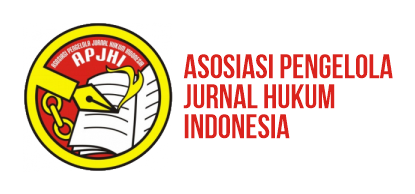E-Voting: Kebutuhan vs. Kesiapan (Menyongsong) E-Demokrasi
DOI:
https://doi.org/10.31078/jk847Keywords:
e-ID card, e-voting, electionAbstract
Along with the success of e-voting in the election of leaders at the village in Jembrana District, Bali Province, the Chief Electoral Hamlet (Kelihan Banjar Dinas) in the Village Yehembang, Pohsanten Village, District and Village Mendoyo Perancak, Jembrana district by using the e-ID card, opening new opportunities for Indonesia to use these methods in the upcoming election. However, by retaining Article 88 of Law Number 32 Year 2004 regarding Regional Government provides the opportunity for areas not yet ready for e-voting to keep using conventional mencontreng election or vote.
References
California Internet Voting Task Force, A report on the Feasibility of Internet Voting, January 2000, 12.
Feldman, Ariel J., Halderman, J. Alex, and Felten, Edward W.. “Security Analysis of the Diebold AccuVote-TS Voting Machine” (September 13, 2006): 15,. http://itpolicy.princeton.edu/voting/tspaper.pdf.(7Juli 2011)
Gefen, D., Rose, G.M., Warkentin, M., dan Pavlou, P.A.. 2005. Cultural diversity and trust in IT adoption: A comparison of potential e-voters in the USA and South Africa. Journal of Global Information Management 13, No. 1: 54.
Hajjar, M., Daya, B., Ismail, A., dan Hajjar, H., An e-voting system for Lebanese elections, Journal of Theoretical and Applied Information Technology, (2006): 21-22.
Internet Policy Institute, Report of the National Workshop on Internet Voting – Issues and Research Agenda (March 2001).
Lauer, T.W. The risk of e-voting, Electronic Journal of e-Government 2, No. 3, (2004): 177-179.
Magi, T. (2007). Practical Security Analysis of E-voting Systems, Master thesis. Tallinn University of Technology. Faculty of Information Technology. Department of Informatics, Chair of Information Security, hal. 115.
Nevo, S. dan Kim, H. How to compare and analyse risks of internet voting versus other modes of voting, Electronic Government: An International Journal 3, No. 1, (2006): 105-108.
Schaupp, L.C. dan Carter., L. E-voting: From apathy to adoption, Journal of Enterprise Information Management 18, No. 5, (2005): 586-587.
Smith, A.D. dan Clark, J.S. Revolutionising the voting process through online strategies. Online Information Review, No. 5, (2005): 513.
Priyono, Edi. “E-voting: Urgensi Transparansi dan Akuntabilitas.” Disampaikan pada Seminar Nasional Informatika UPN “Veteran” Yogyakarta tanggal 22 Mei 2010.
Zafar, Ch.N. dan Pilkjaer, A. (2007). E-voting in Pakistan, Master Thesis, Departement of Business Administration and Social Sciences, Lulea University of Technology.
Zamora, C.G., Henriquez, F.R., dan Arroyo, D.O. (2005). SELES: An e-voting system for medium scale online elections. Proceedings of the 6th Mexican International Conference on Computer Science (ENC’05).
Downloads
Published
How to Cite
Issue
Section
License
Authors who publish with this journal agree to the following terms:
- Copyright of the published articles will be transferred to the journal as the publisher of the manuscripts. Therefore, the author confirms that the copyright has been managed by the publisher.
- The publisher of Jurnal Konstitusi is The Registrar and Secretariat General of the Constitutional Court of the Republic of Indonesia.
- The copyright follows Creative Commons Attribution-NonCommercial-ShareAlike 4.0 International License: This license allows reusers to distribute, remix, adapt, and build upon the material in any medium or format for noncommercial purposes only, and only so long as attribution is given to the creator. If you remix, adapt, or build upon the material, you must license the modified material under identical terms.

















